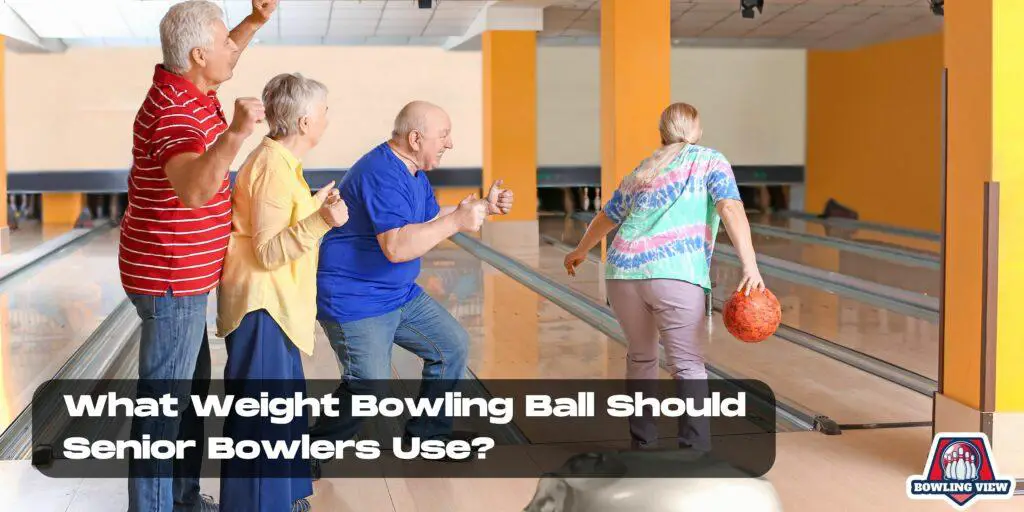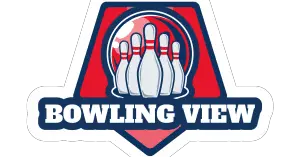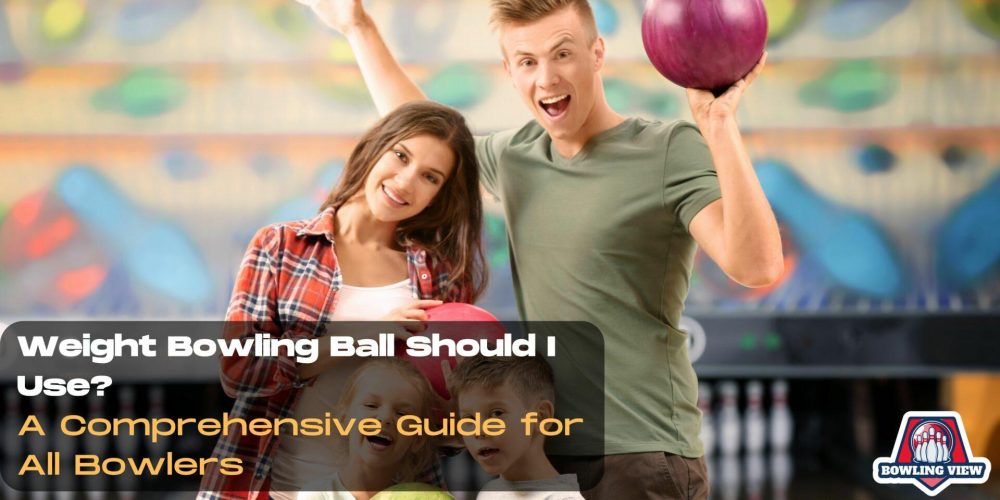Picking the ideal bowling ball weight can be a game-changer in your bowling journey. Knowing how to choose a bowling ball that perfectly matches your strength and style is a critical part of mastering the game.
In this article, we will delve into the world of bowling balls, focusing on their weight and how to choose the right bowling ball for you.
We’ll unravel some myths, address common misconceptions, and offer some helpful tips. It’s a must-read for every bowler, beginner, or pro, who wants to better their game by finding the right bowling ball weight.
Does Bowling Ball Weight Matter?
Yes, the weight of the bowling ball matters immensely. The ball’s weight determines how much control you have when throwing the ball down the lane.
Using a bowling ball that’s too heavy may lead to poor control, while a ball that is too light may not carry enough power to knock down the pins effectively.
The rule of thumb is to use a ball that’s about ten percent of your body weight, ensuring a comfortable weight that won’t strain your body.
What is the Heaviest Bowling Ball Weight I Can Use?
The heaviest legal ball you can use in a bowling game weighs 16 pounds. This maximum weight is set by the United States Bowling Congress. However, just because you can use a 16-pound bowling ball, it doesn’t mean you should.
The right bowling ball weight for you largely depends on your strength and comfort. You don’t want to strain your wrist or forearm by using a ball too heavy for you.
Is a Heavier Ball Better for Bowling?
Contrary to popular belief, a heavier ball is not always better for bowling. While it’s true that a heavier bowling ball can knock down pins with more force, it can also be more difficult to control.
It’s important to strike a balance between the ball’s weight and your strength to maintain control and accuracy.
How to Choose the Right Bowling Ball Weight as a Beginner?
For beginners, it’s recommended to start with a lighter ball and gradually increase the weight as you become more comfortable with the game. You may want to start with a house ball available at your local bowling alley.
These balls usually weigh between 6 to 16 pounds, providing a wide range of options to find the best ball for your needs. As you grow more confident, consider buying your own ball that fits your grip and preferred weight.
For more information about the Right Bowling Ball Weight as a Beginner, visit this page>> https://www.bowlingball.com/BowlVersity/beginner-bowler-bowling-ball-weight.
What Weight Bowling Ball Should Senior Bowlers Use?
Senior bowlers should prioritize comfort and control when choosing a bowling ball. A lighter ball, around 12 to 14 pounds, is often suitable for most senior bowlers.

That said, it’s essential to find a comfortable weight, no matter the age group, to ensure a pleasant bowling experience.
Is the Bowling Ball too Light? What are the Signs?
If you notice that your ball tends to bounce, skid, or deviate off course, it could be a sign that your bowling ball is too light.
Another sign could be the ball failing to knock down the pins effectively despite accurate throws. Always pay attention to these signs and adjust the ball weight accordingly.
What Weight of Bowling Ball Do Pro Bowlers Use?
Professional bowlers often use balls weighing between 14 to 16 pounds. This weight range offers an optimal balance of power and control for experienced bowlers.
However, the best weight ultimately depends on the individual bowler’s strength, skill level, and style.
How to Adjust if the Bowling Ball Weight Feels Uncomfortable?
If the weight of your bowling ball doesn’t feel right, think about using a lighter ball or go to a bowling shop.
The experts there can help you change your ball’s weight to suit you better. Always remember, the goal is to choose a ball weight that you can easily and consistently roll without any discomfort or loss of control.
How to Choose a Bowling Ball for Female Bowlers?
Female bowlers often prefer bowling balls that weigh between 10 to 14 pounds. However, this isn’t a hard-and-fast rule. The right ball weight for female bowlers will also depend on their strength, comfort, and style of play.
What are the Benefits of Choosing the Right Bowling Ball Weight?
Selecting the right bowling ball weight offers multiple benefits, including improved control, accuracy, and power. It also reduces the risk of injuries caused by using a ball that’s too heavy. Finally, it enhances your overall performance and enjoyment of the game.
In Summary, Remember:
- Bowling ball weight matters and can significantly impact your game.
- The heaviest bowling ball you can use is 16 pounds, but this doesn’t mean it’s the best for everyone.
- A heavier ball is not always better; you must balance weight with control and comfort.
- Beginners should start with a lighter ball and gradually increase the weight.
- Senior bowlers and female bowlers should choose a weight that offers comfort and control.
- Signs that your ball is too light include bouncing, skidding, or deviating off course.
- Pro bowlers typically use balls weighing between 14 to 16 pounds.
- If the ball weight feels uncomfortable, consider adjusting the weight or seeking professional advice.
- Choosing the right bowling ball weight can improve your game and make bowling more enjoyable.
Related Articles:
FAQs
If you’re looking for answers to your questions about how to choose the right bowling ball weight, then this FAQs section is perfect for you.
A: The right weight of a bowling ball largely depends on your strength and comfort. A majority of professional bowlers usually use balls that are around 10% of their body weight,
but it’s recommended not to exceed a 16-pound ball, as it’s the heaviest ball permitted in the game. A new ball may feel different, but over time you’ll adjust to the weight.
A: You should go to a pro shop to find a comfortable weight. Hold the ball in your hand and try to hold it without your arm shaking.
If your arm is shaking, the ball is too heavy. If you can throw a ball with ease and without discomfort, it’s likely the right weight.
Also, note that a too-light ball might not have enough force to knock down the pins effectively.
A: The heavier the ball, the more potential it has to knock down pins. A heavier ball may create more impact and cause the pins to scatter more upon contact.
However, they also have more static weights than a bowling ball, which can affect the path of the ball. This is why it’s important to find a comfortable weight that still leaves you in control.
A: Although house balls can give a fair insight into what weight you may be able to handle, they are not ideal for understanding exact personal requirements. The difference lies in the ball fit.
A personal bowling ball will be drilled to match your finger’s size, enabling you to grip and hold the ball more comfortably and securely than a house ball. So, the same weight may feel lighter in your personal bowling ball.
A: An 8-pound ball may be too light for some adults, as it may not have enough power to effectively knock down the pins.
However, it may be perfect for others, especially those starting out or facing physical conditions. The best bowling ball is always the one that feels the most comfortable and manageable to the player.
A: Yes, a ball can be too light. A lighter bowling ball may not have enough power to knock the pins down efficiently, especially if you’re aiming for strikes. Plus, you may find that you’re throwing it faster than intended, which can impact your accuracy.
A: Yes, a 14-pound ball is good for beginners. It provides a good balance between weight and control.
This allows them to get used to the weight of a bowling ball while also having enough power to knock down pins effectively.
A: The core of the ball, known as the weight block, plays a crucial role in ball motion. The size, shape, and density of the core can greatly influence how a ball moves down the lane.
Hence, the weight of the ball might affect the influence of the core on the ball’s performance. Be sure to discuss this with your pro shop when choosing your ball, as they can advise you on these aspects.
A: Yes, plastic balls, also known as spare balls, are good for beginners. They don’t hook much and go straight, helping beginners focus on their throw and aim.
They are also lighter in weight, making them easier to handle for those who are learning.
A: It is usually recommended not to go for the maximum legal weight, which is a 16-pound ball unless you are absolutely comfortable with it.
Using a ball that’s too heavy for you can lead to injury and isn’t good for your bowling technique.
Remember, the best bowling ball is not the heaviest but the most comfortable and best controlled by the bowler.


